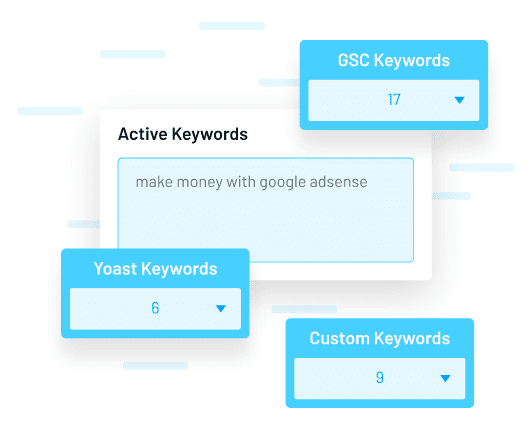
In the ever-evolving world of SEO, one concept has remained a cornerstone of successful content strategies: cornerstone content. As search engines become more sophisticated and user expectations rise, creating content that not only ranks but also engages and converts is more critical than ever. This article will uncover the secrets behind crafting high-performing cornerstone content that stands the test of time and dominates search engine results.
What Is Cornerstone Content and Why It Matters
Cornerstone content refers to the most comprehensive, authoritative, and valuable pieces of content on a website. These are the articles, guides, or resources that cover broad topics in depth, providing readers with a one-stop solution to their queries. Unlike short-form blog posts, cornerstone content is designed to be evergreen—meaning it remains relevant and useful over time.
In the context of SEO, cornerstone content plays a pivotal role in establishing your website as an authority on specific topics. Search engines like Google prioritize content that offers deep value, relevance, and clarity. By creating cornerstone content, you’re signaling to both users and search algorithms that your site is a trusted source of information.
For example, if you run a fitness blog, a cornerstone piece might be “The Ultimate Guide to Building Muscle at Home.” This type of content covers all aspects of the topic, from workout routines to nutrition advice, and is updated periodically to ensure accuracy and relevance.
How Cornerstone Content Impacts SEO Performance
Cornerstone content has a direct impact on several key SEO metrics:
- Traffic: Well-optimized cornerstone content can drive consistent organic traffic over time.
- Engagement: Readers are more likely to spend time on pages that provide comprehensive information.
- Dwell Time: Longer dwell time signals to search engines that your content is valuable.
- Conversions: A well-structured cornerstone page can guide users through the buyer’s journey, leading to higher conversion rates.
Moreover, cornerstone content often serves as a hub for internal linking, helping to distribute link equity across your site and improve the visibility of other pages. It also supports long-tail keyword targeting, making it easier to rank for a wide range of related terms.
When combined with E-E-A-T (Experience, Expertise, Authoritativeness, Trustworthiness), cornerstone content becomes even more powerful. Search engines favor content that demonstrates deep knowledge and credibility, which is exactly what a well-researched, comprehensive piece can provide.
Step-by-Step Implementation Framework
Creating effective cornerstone content requires a structured approach. Here’s a step-by-step framework to help you build content that ranks and resonates with your audience.
1. Define or Audit the Current Situation
Start by identifying the topics that are most important to your audience. Use tools like Google Trends, Ahrefs, or SEMrush to find high-intent keywords and gaps in your current content. Analyze your existing content to see where you can expand or improve.
Also, consider your audience’s pain points and what they’re searching for. Are there common questions or problems that your content isn’t addressing? This is where cornerstone content can make a difference.
2. Apply Tools, Methods, or Tactics
Once you’ve identified the right topic, it’s time to create the content. Here are some best practices:
- Research Thoroughly: Gather insights from industry leaders, studies, and user feedback.
- Structure It Well: Use headings, subheadings, and bullet points to make the content scannable.
- Include Visuals: Add charts, infographics, and images to break up text and enhance understanding.
- Optimize for SEO: Use your target keywords naturally throughout the content, and include meta tags, alt text, and internal links.
Tools like SurferSEO, AnswerThePublic, and Yoast SEO can help streamline this process and ensure your content is optimized for search engines.
3. Measure, Analyze, and Optimize
After publishing your cornerstone content, monitor its performance using analytics tools like Google Analytics or Screaming Frog. Track metrics such as page views, bounce rate, and time on page to understand how users are interacting with your content.
Use A/B testing to experiment with different headlines, formats, and calls to action. Continuously update your content based on user feedback and changing trends to keep it fresh and relevant.
Real or Hypothetical Case Study
Let’s take a hypothetical case study of a digital marketing agency that wanted to boost its organic traffic. The agency identified a gap in its content around “SEO Best Practices for Small Businesses” and decided to create a cornerstone piece on the topic.
They conducted in-depth research, interviewed industry experts, and created a comprehensive guide covering everything from keyword research to on-page optimization. They optimized the content with relevant keywords, added internal links, and promoted it through social media and email newsletters.
Within six months, the page ranked for over 50 high-intent keywords and drove 15,000+ monthly visitors to the site. The content also became a go-to resource for small businesses looking to improve their online presence, leading to increased leads and conversions.
Tools and Techniques for Cornerstone Content
Here are some essential tools to help you create and optimize cornerstone content:
- SurferSEO: For keyword clustering, semantic scoring, and content optimization.
- Ahrefs: To analyze competitors, find keywords, and track rankings.
- Google Analytics: To monitor traffic, engagement, and user behavior.
- Canva: For creating visually appealing graphics and infographics.
- Grammarly: To ensure your content is clear, concise, and error-free.
- AnswerThePublic: To discover popular questions and topics related to your niche.
These tools can help you streamline the content creation process and ensure your cornerstone content is both engaging and optimized for search engines.
Future Trends and AI Implications
As AI continues to shape the future of SEO, the importance of cornerstone content will only grow. With the rise of voice search, multimodal search, and AI-powered assistants, users are looking for content that is not only informative but also easy to consume.
AI-driven tools like Google’s Search Generative Experience (SGE) are already changing how users interact with search results. In this landscape, cornerstone content will play a crucial role in providing the depth and quality that AI systems prioritize.
To stay ahead, focus on creating content that is not just keyword-rich but also valuable, actionable, and aligned with user intent. Embrace AI tools to enhance your content strategy, but never lose sight of the human element that makes great content stand out.
Key Takeaways
- Cornerstone content is the backbone of a strong SEO strategy, offering comprehensive, authoritative information that drives traffic and engagement.
- It helps establish your website as an expert in your niche and improves your chances of ranking for high-intent keywords.
- A structured approach—starting with research, followed by creation and optimization—ensures your content is both effective and sustainable.
- Tools like SurferSEO, Ahrefs, and Google Analytics can help you create and measure the success of your cornerstone content.
- As AI reshapes the search landscape, the need for high-quality, in-depth content will only increase.
By mastering the art of creating cornerstone content, you’ll not only improve your SEO performance but also build a stronger connection with your audience. Start today, and watch your content shine in the search results.
Meta Title: The Secret to Creating High-Performing Cornerstone Content That Ranks
Meta Description: Learn how to create cornerstone content that ranks, engages, and converts with our step-by-step guide.
SEO Tags (5): cornerstone content, SEO strategy, content marketing, evergreen content, SEO ranking
Internal Link Suggestions: Parameter #3: Keyword Research Strategies, Parameter #7: On-Page SEO Optimization, Parameter #9: Content Quality and Authority
External Source Suggestions: https://support.google.com/, https://ahrefs.com/, https://www.semrush.com/






